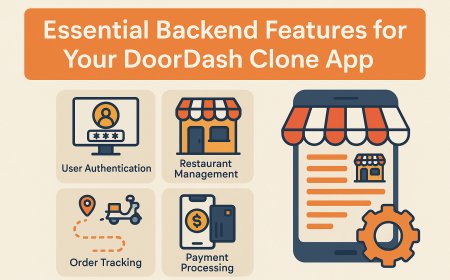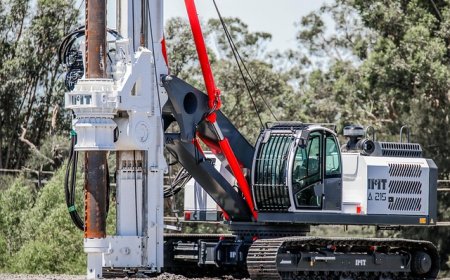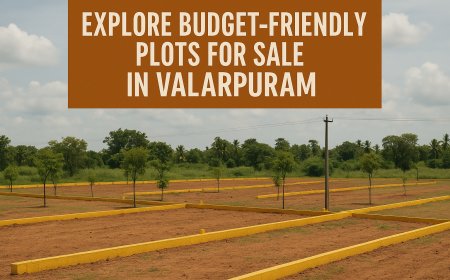How to Migrate Terraform Workspace
How to Migrate Terraform Workspace Terraform, developed by HashiCorp, has become the de facto standard for infrastructure as code (IaC) across modern cloud environments. One of its most powerful features is the ability to manage multiple environments—such as development, staging, and production—through workspaces. Workspaces allow teams to maintain separate state files for different configurations
How to Migrate Terraform Workspace
Terraform, developed by HashiCorp, has become the de facto standard for infrastructure as code (IaC) across modern cloud environments. One of its most powerful features is the ability to manage multiple environments—such as development, staging, and production—through workspaces. Workspaces allow teams to maintain separate state files for different configurations within the same Terraform configuration, reducing redundancy and improving operational efficiency.
However, as organizations scale, evolve their infrastructure architecture, or adopt new cloud providers, the need to migrate Terraform workspaces becomes inevitable. Whether you're consolidating environments, switching from local to remote state storage, moving between cloud providers, or restructuring your IaC strategy, migrating Terraform workspaces requires precision, planning, and a deep understanding of state management.
This guide provides a comprehensive, step-by-step tutorial on how to migrate Terraform workspaces safely and efficiently. We’ll cover the underlying mechanics of Terraform state, practical migration techniques, industry best practices, recommended tools, real-world examples, and answers to frequently asked questions. By the end of this guide, you’ll be equipped to perform workspace migrations with confidence, minimizing downtime and avoiding costly state corruption.
Step-by-Step Guide
Understand Terraform State and Workspaces
Before initiating any migration, it’s critical to understand how Terraform manages state and how workspaces function within that framework.
Terraform state is a JSON file (typically named terraform.tfstate) that records the current state of your infrastructure. It maps real-world resources to your configuration, tracks metadata, and maintains dependencies. Without state, Terraform cannot determine what changes to apply during future runs.
Workspaces, on the other hand, are logical separations within a single Terraform configuration. Each workspace has its own state file. When you run terraform workspace new, Terraform creates a new state file named terraform.tfstate.d/{workspace-name}/terraform.tfstate (for local state) or stores it under a unique prefix in remote backends like S3, Azure Blob Storage, or Google Cloud Storage.
By default, Terraform uses the default workspace. You can list all workspaces with terraform workspace list and switch between them using terraform workspace select {name}.
Assess Your Current Environment
Before migration, conduct a full audit of your current Terraform setup:
- Identify all existing workspaces using
terraform workspace list. - Locate where your state files are stored—locally, on a shared drive, or via a remote backend (S3, Azure, etc.).
- Review the contents of each state file using
terraform state listto understand the resources managed per workspace. - Check for any dependencies between workspaces (e.g., outputs consumed from one workspace as inputs in another).
- Document the current state of each environment (e.g., production, staging, dev) and its corresponding workspace name.
Use this audit to determine the target state structure. Are you moving from local to remote? Consolidating multiple workspaces into one? Renaming workspaces? Migrating from AWS to Azure? Your goals will dictate your migration strategy.
Backup Your State Files
State files are the single source of truth for your infrastructure. A corrupted or lost state file can result in orphaned resources or complete infrastructure loss. Always create a backup before proceeding.
For local state:
cp terraform.tfstate terraform.tfstate.backup
cp -r terraform.tfstate.d/ terraform.tfstate.d.backup
For remote state (e.g., S3):
aws s3 cp s3://your-bucket/terraform/state/production/terraform.tfstate ./production.tfstate.backup
Store backups in a secure, version-controlled location such as a private Git repository with restricted access, or a secure object storage bucket with versioning enabled.
Choose Your Migration Strategy
There are four common migration scenarios:
- Migrating from local to remote state storage
- Migrating between remote backends (e.g., S3 to Azure Blob)
- Renaming or reorganizing workspaces
- Consolidating multiple workspaces into a single configuration
Each requires a slightly different approach. We’ll walk through each in detail.
Scenario 1: Migrating from Local to Remote State Storage
Many teams begin with local state for simplicity but later move to remote backends for collaboration, security, and state locking. Here’s how to migrate:
Step 1: Configure the Remote Backend
Update your Terraform configuration to include a remote backend block. For example, to migrate to an S3 backend:
terraform {
backend "s3" {
bucket = "your-terraform-state-bucket"
key = "path/to/your/workspace/terraform.tfstate"
region = "us-east-1"
encrypt = true
dynamodb_table = "terraform-locks"
}
}
Replace the values with your actual bucket name, key path, region, and DynamoDB lock table name.
Step 2: Initialize Terraform with the New Backend
Run:
terraform init
Terraform will detect the change in backend configuration and prompt you to copy the existing state to the new backend:
Do you want to copy existing state to the new backend?
Pre-existing state was found while migrating the previous "local" backend to the
newly configured "s3" backend. No existing state was found in the newly configured
"s3" backend. Do you want to copy this state to the new "s3" backend?
Enter "yes" to copy and "no" to start with an empty state.
Enter yes. Terraform will upload your local state to S3 and remove the local state file (if configured to do so).
Step 3: Verify the Migration
Run:
terraform state list
Ensure all resources are listed. Then, run:
terraform plan
Verify that no changes are proposed. If Terraform suggests destroying or recreating resources, stop immediately—this indicates a misconfiguration or state mismatch.
Step 4: Update Team Access and CI/CD Pipelines
Ensure all team members and CI/CD systems now use the remote backend. Remove any local state files from shared repositories. Update deployment scripts to include terraform init before any plan or apply.
Scenario 2: Migrating Between Remote Backends (e.g., S3 to Azure Blob)
This scenario is more complex because you’re moving between different storage systems with different authentication mechanisms.
Step 1: Configure the New Backend
Update your Terraform configuration to use the new backend. For Azure Blob Storage:
terraform {
backend "azurerm" {
storage_account_name = "yourstorageaccount"
container_name = "terraform-state"
key = "production.terraform.tfstate"
resource_group_name = "terraform-rg"
subscription_id = "your-subscription-id"
}
}
Step 2: Initialize and Copy State
Run:
terraform init
You’ll be prompted to copy state from the old backend to the new one. Answer yes.
Terraform will:
- Download the state from the old backend (S3)
- Upload it to the new backend (Azure Blob)
- Update the backend configuration in
.terraform.lock.hcl
Step 3: Validate State Integrity
After migration, run:
terraform show
Compare the output with the original state. Ensure resource IDs, attributes, and dependencies match exactly.
Step 4: Clean Up Old Backend
Once you’ve confirmed the migration is successful and all systems are using the new backend, delete the state file from the old backend to avoid confusion.
Scenario 3: Renaming or Reorganizing Workspaces
Terraform does not support renaming workspaces directly. To rename a workspace, you must create a new one and migrate the state manually.
Step 1: Create a New Workspace
terraform workspace new new-name
Step 2: Export the State from the Old Workspace
terraform workspace select old-name
terraform state pull > old-name.tfstate
Step 3: Push the State to the New Workspace
terraform workspace select new-name
terraform state push old-name.tfstate
Step 4: Verify and Delete Old Workspace
Run terraform state list in the new workspace to confirm all resources are present. Then, if no longer needed:
terraform workspace select default
terraform workspace delete old-name
Warning: Deleting a workspace does not destroy infrastructure—it only removes the state file. Ensure your infrastructure is managed by the new workspace before deletion.
Scenario 4: Consolidating Multiple Workspaces
Some teams maintain separate workspaces for each environment (dev, staging, prod). Over time, this can lead to duplication and maintenance overhead. Consolidating into a single workspace with dynamic configuration is often more efficient.
Step 1: Refactor Configuration for Dynamic Inputs
Replace static environment-specific values with variables and conditionals:
variable "environment" {
type = string
default = "dev"
}
resource "aws_instance" "web" {
ami = lookup(var.ami_map, var.environment)
instance_type = lookup(var.instance_types, var.environment)
tags = {
Name = "web-${var.environment}"
}
}
Step 2: Export and Merge State Files
For each workspace you wish to consolidate:
terraform workspace select dev
terraform state pull > dev.tfstate
terraform workspace select staging
terraform state pull > staging.tfstate
terraform workspace select prod
terraform state pull > prod.tfstate
Use a script to merge these state files into a single state, ensuring resource names are unique. This requires manual editing of the JSON state files to avoid naming collisions.
Step 3: Create a New Workspace
terraform workspace new consolidated
Step 4: Push Merged State
terraform workspace select consolidated
terraform state push merged.tfstate
Step 5: Update CI/CD and Delete Old Workspaces
Modify your deployment pipelines to use the consolidated workspace with the appropriate -var "environment=prod" flag. Once verified, delete the old workspaces.
Validate Migration Success
After any migration, perform these final checks:
- Run
terraform plan—ensure no changes are proposed. - Run
terraform show—verify resource attributes match expectations. - Manually inspect a few critical resources in the cloud console to confirm they still exist and are unchanged.
- Trigger a deployment in your CI/CD pipeline to ensure automation works with the new state.
Best Practices
Always Use Remote State
Local state files are a single point of failure. They are not accessible to other team members and are easily lost. Always use a remote backend with versioning and access controls enabled.
Enable State Locking
State locking prevents concurrent operations that could corrupt the state file. Use DynamoDB for AWS, Azure Storage Lease for Azure, or Google Cloud Storage’s object locking feature.
Version Control Your Configuration, Not State
Never commit terraform.tfstate or terraform.tfstate.d/ to version control. Add them to your .gitignore. Only commit the Terraform configuration files (.tf files), variables, and modules.
Use Meaningful Workspace Names
Use consistent, descriptive names: dev, staging, prod-us-east, prod-eu-west. Avoid names like env1 or test that lose meaning over time.
Document Migration Procedures
Every migration should be documented in your team’s runbook. Include:
- Pre-migration checklist
- Backup locations
- Step-by-step commands
- Rollback plan
- Post-migration validation steps
Test in Non-Production First
Always perform a dry-run migration in a staging environment before touching production. Use a copy of your production state (anonymized if necessary) to simulate the migration.
Use Modules for Reusability
Instead of duplicating code across workspaces, encapsulate common infrastructure patterns in Terraform modules. This reduces the risk of drift and simplifies state management.
Regularly Audit and Clean Up
Periodically review your workspaces. Delete unused ones. Remove orphaned state files. Use tools like terraform state list to audit resource drift.
Implement RBAC for State Access
Restrict write access to state files. Only CI/CD pipelines and approved administrators should have write permissions. Use IAM policies, Azure RBAC, or GCP IAM roles to enforce least privilege.
Monitor State Size
Large state files (>10MB) can cause performance issues. If your state file grows too large, consider splitting infrastructure into multiple Terraform configurations or using workspaces more strategically.
Tools and Resources
Terraform CLI
The primary tool for managing workspaces and state. Essential commands:
terraform workspace list– View all workspacesterraform workspace new <name>– Create a new workspaceterraform workspace select <name>– Switch to a workspaceterraform workspace delete <name>– Delete a workspaceterraform state pull– Download remote state to local fileterraform state push– Upload local state to remote backendterraform state list– List all resources in current stateterraform state show <resource>– Display detailed resource info
Remote Backend Options
- AWS S3 + DynamoDB – Most common for AWS-centric teams. Supports state locking via DynamoDB.
- Azure Blob Storage – Ideal for Microsoft Azure environments. Uses lease-based locking.
- Google Cloud Storage – Native integration with GCP. Supports object versioning and IAM.
- HashiCorp Consul – Good for on-premises or hybrid environments. Requires a Consul cluster.
- HTTP Backend – Useful for custom state storage solutions or internal APIs.
Third-Party Tools
Terraform Cloud / Terraform Enterprise
HashiCorp’s hosted platform provides built-in workspace management, state locking, run triggers, and collaboration features. It eliminates the need to manually manage backends and is ideal for enterprise teams.
Atlantis
An open-source automation tool for Terraform. Integrates with GitHub, GitLab, and Bitbucket. Automatically runs plan and apply on pull requests and supports multiple workspaces per repository.
Terraform State Viewer
Open-source tools like terraform-state-viewer allow you to visualize your state graphically, making it easier to audit and understand dependencies.
Checkov and Terrascan
Security scanning tools that can validate your Terraform configuration before deployment. Use them to ensure your backend configuration follows security best practices (e.g., encryption, access controls).
Custom Scripts
Use shell or Python scripts to automate state export/import across workspaces. Example Python script to merge multiple state files:
import json
import os
states = {}
for file in os.listdir("./states"):
if file.endswith(".tfstate"):
with open(f"./states/{file}", 'r') as f:
states[file.replace('.tfstate', '')] = json.load(f)
Merge resource IDs with environment prefix
merged = {"version": 4, "terraform_version": "1.5.0", "serial": 0, "lineage": "", "outputs": {}, "resources": []}
for env, state in states.items():
for resource in state.get("resources", []):
resource["name"] = f"{env}-{resource['name']}"
merged["resources"].append(resource)
with open("merged.tfstate", "w") as f:
json.dump(merged, f, indent=2)
Documentation and Learning Resources
- Terraform State Documentation
- Workspaces Guide
- HashiCorp Learn: Workspaces
- Official Terraform Examples
Real Examples
Example 1: E-commerce Platform Migration to Azure
A company running its e-commerce infrastructure on AWS with local Terraform state decided to migrate to Azure due to cost and compliance requirements. The team had three workspaces: dev, staging, and prod.
Migration Steps:
- Created Azure Storage Account and Blob Container with versioning enabled.
- Updated Terraform configuration to use the
azurermbackend. - Backed up all local state files.
- For each workspace, ran
terraform initand chose to copy state to Azure. - Verified resource consistency using
terraform show. - Updated CI/CD pipelines to use Azure credentials.
- Deleted old S3 state files after 30 days of monitoring.
Outcome: Zero downtime. All infrastructure remained intact. Team productivity improved due to centralized state management.
Example 2: Consolidating Dev and Staging Workspaces
A startup had separate Terraform configurations for dev and staging, leading to duplicated code and inconsistent deployments. They refactored their codebase to use a single configuration with environment variables.
Migration Steps:
- Created a
main.tfwith dynamic variables for region, instance size, and AMI. - Exported state from dev and staging using
terraform state pull. - Renamed resources in each state file to include environment prefixes (e.g.,
aws_instance.dev-web). - Created a new workspace called
envs. - Pushed the merged state to the new workspace.
- Updated deployment scripts to pass
-var "environment=dev"or-var "environment=staging".
Outcome: Reduced configuration duplication by 70%. Deployment time decreased by 40%. Onboarding new engineers became significantly easier.
Example 3: Renaming a Production Workspace
A team used the workspace name production but wanted to rename it to prod-us-west-2 to reflect region specificity.
Migration Steps:
- Created new workspace:
terraform workspace new prod-us-west-2 - Exported state from
production:terraform state pull > prod-us-west-2.tfstate - Pushed state to new workspace:
terraform state push prod-us-west-2.tfstate - Verified all resources existed in the new workspace.
- Deleted old
productionworkspace.
Outcome: Improved clarity across the organization. No service disruption occurred.
FAQs
Can I rename a Terraform workspace directly?
No. Terraform does not support renaming workspaces. You must create a new workspace and manually migrate the state using terraform state pull and terraform state push.
What happens if I delete a Terraform workspace?
Deleting a workspace only removes its state file. It does not destroy any infrastructure. Your cloud resources remain intact. However, Terraform will no longer manage them unless you restore the state file or recreate the configuration.
Can I use the same state file across multiple workspaces?
No. Each workspace must have its own state file. Sharing state files between workspaces leads to conflicts and corruption. Use modules instead to share configuration logic.
Is it safe to edit the state file manually?
Manually editing state files is extremely risky and should only be done as a last resort by experienced engineers. Always back up the state first. Use terraform state rm or terraform state mv for safe modifications when possible.
How do I migrate state if I don’t have access to the original backend?
If you cannot access the original backend, you must restore from a backup. If no backup exists, you may need to import resources manually using terraform import, which requires knowing the exact resource IDs and configurations.
Can I migrate Terraform state between different Terraform versions?
Yes, but with caution. Terraform state files are versioned. When you upgrade Terraform, it may upgrade the state format automatically. Always test in a non-production environment first. Use terraform state pull to inspect the state before and after the upgrade.
How often should I backup my Terraform state?
Backup your state file after every successful terraform apply. Use automated scripts or CI/CD pipelines to push backups to a secure, versioned storage location. Enable backend versioning (e.g., S3 versioning) as an additional safety layer.
What should I do if Terraform shows changes after migration?
If terraform plan shows planned changes after migration, stop immediately. This indicates a state mismatch. Common causes include:
- Incorrect backend configuration
- Missing or mismatched provider settings
- Manually modified resources outside Terraform
- Corrupted state during transfer
Compare the state files before and after migration using a diff tool. Restore from backup and retry the migration.
Can I use Terraform Cloud to simplify workspace migration?
Yes. Terraform Cloud provides a web-based interface to manage workspaces, import/export state, and handle backend migration automatically. It also offers audit logs, team permissions, and run history, making it ideal for teams looking to reduce operational overhead.
Conclusion
Migrating Terraform workspaces is not merely a technical task—it’s a strategic operation that impacts the reliability, scalability, and maintainability of your infrastructure. Whether you’re moving from local to remote state, consolidating environments, or renaming workspaces for clarity, the principles remain the same: plan, backup, validate, and document.
The tools and methods outlined in this guide provide a robust framework for executing migrations safely. By following best practices—such as using remote backends, enabling state locking, and testing in non-production environments—you minimize risk and maximize confidence in your infrastructure automation.
As your organization grows, so too will the complexity of your Terraform setup. The ability to migrate workspaces effectively ensures your IaC strategy evolves alongside your business—not as a source of friction, but as a catalyst for innovation.
Remember: Terraform state is your infrastructure’s memory. Treat it with the same care and respect you would give to your production databases. With the right approach, migrating Terraform workspaces becomes not just manageable—but routine.





































